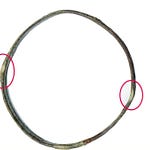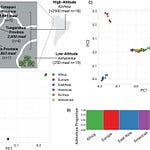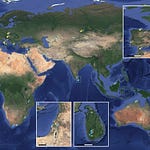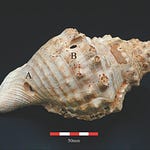In a windswept coastal field near Särdal, Sweden, archaeologists recently examined what at first seemed an ordinary lump of metal. Its plano-convex shape—a low dome with a flat base—resembled the ingots long associated with Bronze Age trade. Yet isotopic tests told a different story: this was no Bronze Age artifact, but a copper-zinc-tin-lead alloy typical of the Iron Age.
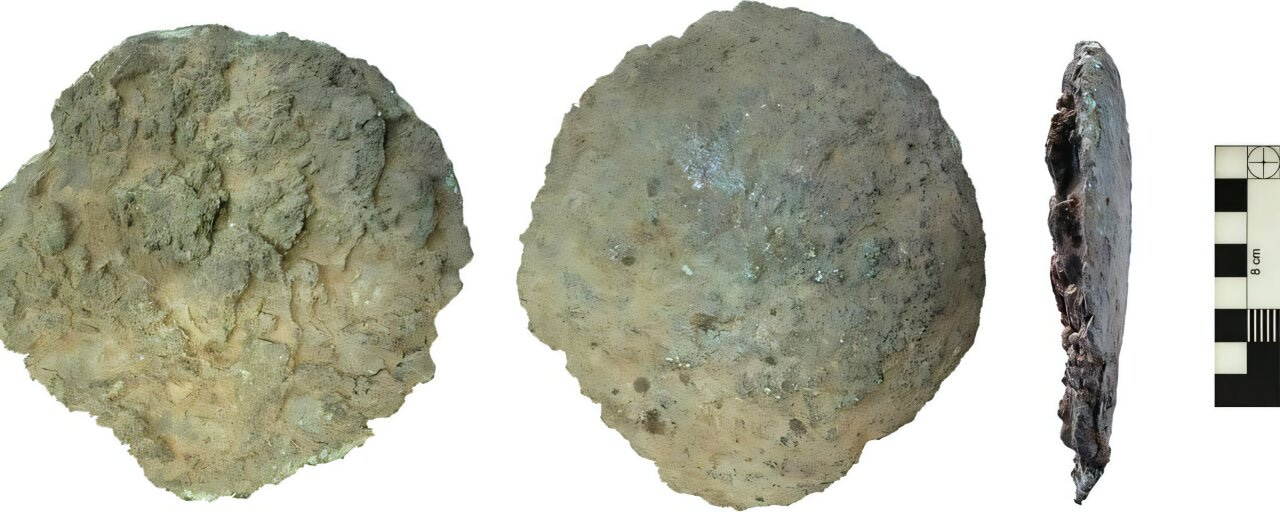
The find, reported in the Journal of Archaeological Science: Reports1 by Serena Sabatini and colleagues, is the first complete plano-convex ingot identified from Sweden. When set beside ingot rods from northeastern Poland’s Iława Lakeland, it reveals a shared recipe for alloying that hints at much wider economic ties linking the Baltic world with Atlantic and continental Europe.
“Due, in particular, to its shape and size, it seemed to us a Bronze Age artifact,” noted Serena Sabatini of the University of Gothenburg. “But the ingot turned out to be made of a copper-zinc-tin-lead alloy, typical of the Iron Age and later periods.”
The ingot as artifact and signal
Plano-convex ingots are best known from Bronze Age contexts across the Mediterranean, where they were produced for transport and exchange. To find one in Sweden—an isolated object with no archaeological context—posed interpretive challenges.
To resolve them, the team turned to isotope geochemistry. By comparing trace elements and lead isotope ratios in the Särdal ingot with similar analyses from Polish finds, the researchers uncovered near-identical signatures. This suggested not only contemporaneity but also a shared metallurgical tradition.
“Given the astonishing similarity of the metal composition in all those artifacts, we also managed to strengthen earlier hypotheses about contacts and networking in the Baltic area during the Nordic pre-Roman Iron Age,” Sabatini explained.
Collaboration across borders
The study highlights the role of collaboration in archaeometallurgy. Polish scholars had recently published data on Iron Age ingot rods, and only by comparing datasets could the Swedish find be placed within a coherent historical context.
“Networking and international collaboration are also important to unveil patterns and data that would remain unknown when one looks exclusively at the local context,” said Sabatini. “Without the successful collaboration with our Polish colleagues, we would never have achieved such remarkable results.”
Iron Age networks beyond Scandinavia
The metallurgical match between Sweden and Poland points to more than isolated experiments in alloying. It suggests structured exchange, perhaps even organized distribution of copper alloys across the Baltic. Such trade would have been essential in a world where access to ores, especially tin, was uneven and often distant.
By the Nordic pre-Roman Iron Age (ca. 500 BCE–CE 1), Scandinavia was already tied into far-flung exchange networks that connected the Atlantic façade, the Baltic, and continental Europe. Objects of Mediterranean origin occasionally reached northern Europe; amber and furs traveled south. Metal, always a commodity of strategic importance, was the medium through which these exchanges were made tangible.
What a single ingot tells us
In isolation, the Särdal ingot might have been written off as a curiosity. But when analyzed and contextualized, it becomes a key to understanding the broader economic and cultural world of the Iron Age Baltic. Objects like this ingot and the Polish rods illuminate how trade and metallurgy worked together to weave the pre-Roman north into continental patterns.
Related Research
Ling, J., & Stos-Gale, Z. (2015). Isotope evidence for the origin of metals in Late Bronze Age Europe. Journal of Archaeological Science, 61, 246–259. https://doi.org/10.1016/j.jas.2015.06.001
Nørgaard, H. W., Pernicka, E., & Vandkilde, H. (2019). On the trail of Scandinavia’s early metallurgy: Provenance, transfer and mixing. PLOS ONE, 14(7), e0219574. https://doi.org/10.1371/journal.pone.0219574
Radivojević, M., Rehren, T., Pernicka, E., Šljivar, D., Brauns, M., & Borić, D. (2010). On the origins of extractive metallurgy: New evidence from Europe. Journal of Archaeological Science, 37(11), 2775–2787. https://doi.org/10.1016/j.jas.2010.06.012
Sabatini, S., & Bergerbrant, S. (2019). Trade and Civilisation: Economic Networks and Cultural Ties, from Prehistory to the Early Modern Era. Cambridge University Press. https://doi.org/10.1017/9781108563709
Sabatini, S., Nordvall, L., Nowak, K., Stos-Gale, Z., Oudbashi, O., Sobieraj, J., Karasiński, J., & Wranning, P. (2025). Iron age metal trade between the Atlantic and the Baltic Sea: new insights from the first complete plano-convex ingot found in Sweden and ingot rods from the Iława Lakeland in northeastern Poland. Journal of Archaeological Science, Reports, 66(105312), 105312. https://doi.org/10.1016/j.jasrep.2025.105312



